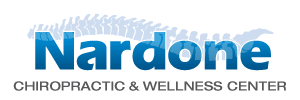
The best and fastest results are usually achieved through a combination of Chiropractic and muscle treatment modalities which address the interaction between the spine, joints, muscles and nerves.
Chiropractic Adjustments –
The word adjustment describes hundreds of ways of using carefully directed and controlled pressure to restore joints to a more normal position and motion. In addition, to the correction of spinal joints, nearly all of the body’s joints can be adjusted using tried and true Chiropractic methods. These adjustments improve joint flexibility and restore strength to areas weakened by misalignment. They also alleviate strain on surrounding muscles that are overworked by trying to pull a stiff or misaligned joint back into its proper place.
Active Release Technique (ART) Muscle Therapy –
Injuries resulting from over-used muscles often respond best to ART therapy, a treatment method that offers immediate and dramatic results. Headaches, back pain, carpal tunnel syndrome, shin splints, shoulder pain, sciatica, plantar fascitis, knee problems, and tennis elbow are just a few of the many conditions that can be resolved quickly and permanently with this type of treatment. It is a patented, state-of-the-art soft tissue (muscles, ligaments, fascia, nerves) system.
For this technique, the doctor uses his hands to evaluate the injured soft tissue. Then, precisely applied tension is combined with specific patient movements. Treatment is an interactive process involving both doctor and patient, and every ART session is actually a unique combination of examination and treatment. Patients often notice improvement in their levels of pain, flexibility and strength within seconds following the treatment.
Activator Methods –
Activator Methods is a Chiropractic technique that uses a hand held instrument to deliver a gentle, yet effective, adjustment to the spine or extremities. This low-force technique is commonly used for newborns through geriatric patients. When force, such as a chiropractic adjustment, enters the body, muscles in the involved area are automatically contracted by reflex mechanism, in order to protect that area from the intrusion.
The Activator instrument produces a thrust which is quicker than the body’s reflexes can respond and tighten up the local muscles. So, in simple terms, the force necessary to move and adjust the joint is developed by the speed of the instrument’s thrust, and not by a high force. So, although the Activator instrument produces a very effective thrust, it is felt as only a gentle sensation.
Massage and Deep Tissue Work –
Muscles play a vital role in both stabilizing and moving the joints of the body. This is why muscle problems are nearly always involved with joint dysfunction. The most common form of muscle dysfunction is a muscle spasm, which is the body’s response to protect an injured area from further harm. We employ massage techniques that have been developed over the centuries to combat these problems.
Spinal Decompression Therapy –
Spinal Decompression Therapy is non-surgical, non-invasive, and typically does not involve pain medications. The treatment is not only safe, but also comfortable and relaxing. The course of therapy includes approximately 20 treatment sessions over 4-6 weeks. Each procedure is performed with a unique physio-therapeutic device and is performed by a certified clinician. The treatment sessions are brief, lasting approximately 30 minutes.
Non-Surgical Spinal Decompression Therapy distracts the vertebrae surrounding an injured disc. The 25-30 minute treatment provides static, intermittent, and cycling forces on structures that may be causing low back pain. During treatment, the pressure in between the disc is dropped. This negative pressure promotes the diffusion of water, oxygen, and nutrients into the vertebral disc area, thereby re-hydrating the degenerated disc.
Spinal Decompression is effective in treating Herniated Discs, Bulging Discs, Sciatica and Degenerative Disc Disease by reducing pressure on the vertebral joints, promoting retraction of herniated discs and rehabilitation of damaged discs, thereby relieving low back pain.







